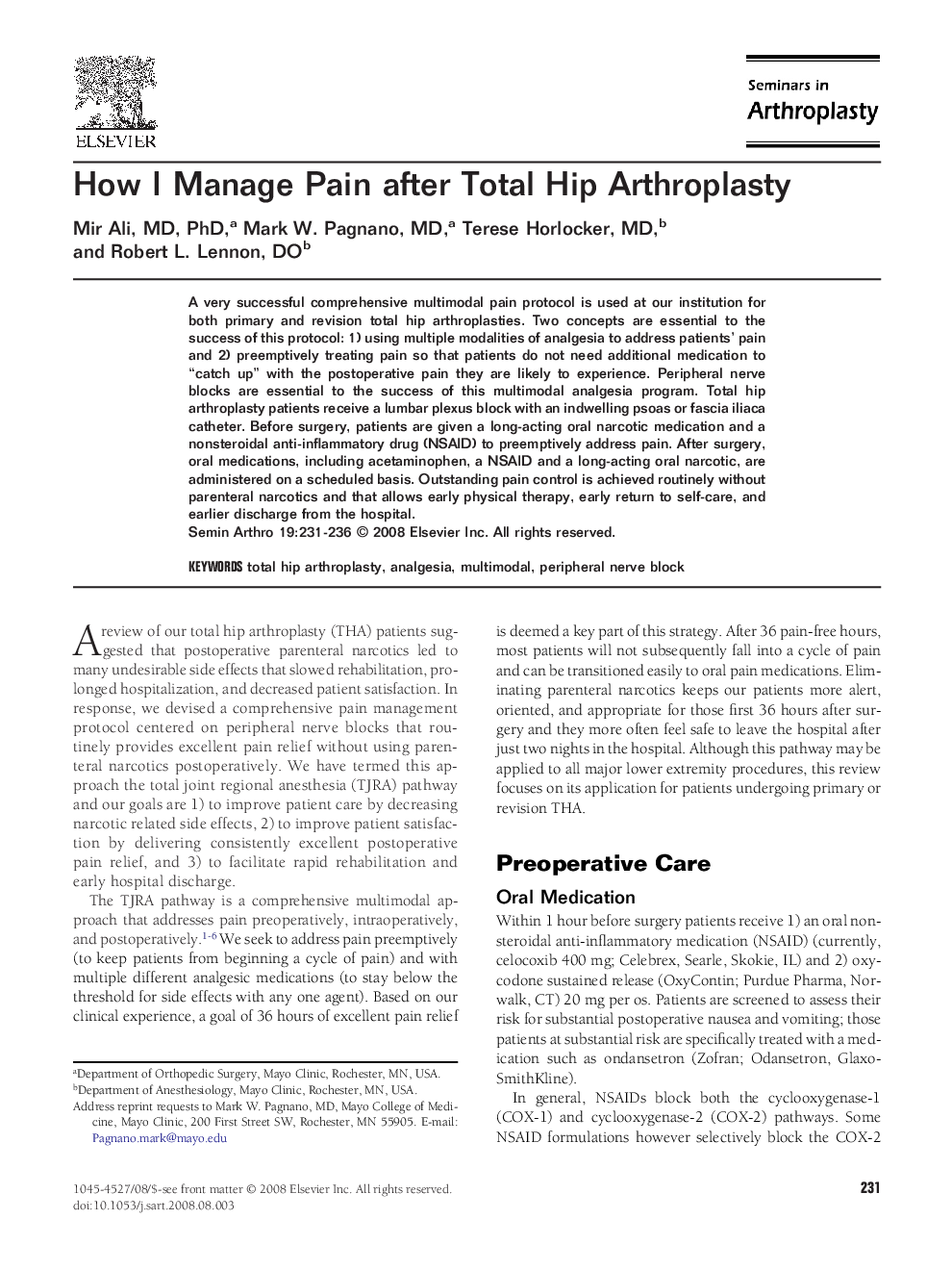| Article ID | Journal | Published Year | Pages | File Type |
|---|---|---|---|---|
| 4094370 | Seminars in Arthroplasty | 2008 | 6 Pages |
A very successful comprehensive multimodal pain protocol is used at our institution for both primary and revision total hip arthroplasties. Two concepts are essential to the success of this protocol: 1) using multiple modalities of analgesia to address patients' pain and 2) preemptively treating pain so that patients do not need additional medication to “catch up” with the postoperative pain they are likely to experience. Peripheral nerve blocks are essential to the success of this multimodal analgesia program. Total hip arthroplasty patients receive a lumbar plexus block with an indwelling psoas or fascia iliaca catheter. Before surgery, patients are given a long-acting oral narcotic medication and a nonsteroidal anti-inflammatory drug (NSAID) to preemptively address pain. After surgery, oral medications, including acetaminophen, a NSAID and a long-acting oral narcotic, are administered on a scheduled basis. Outstanding pain control is achieved routinely without parenteral narcotics and that allows early physical therapy, early return to self-care, and earlier discharge from the hospital.
